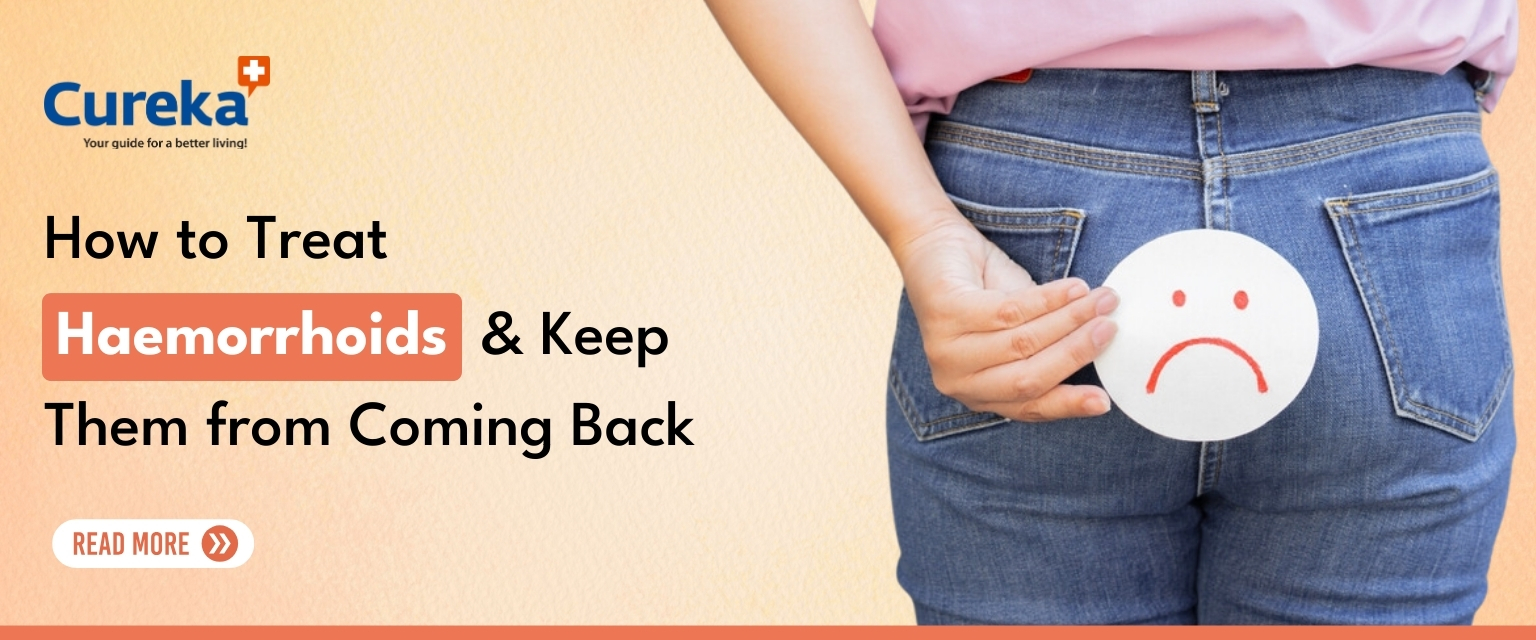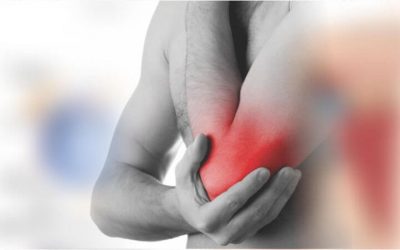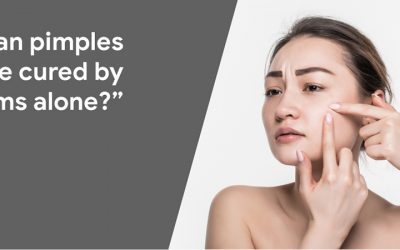How to Treat Haemorrhoids and Keep Them from Coming Back
If you’re struggling with haemorrhoids, commonly known as piles then you’re not alone. They are one of the most common health issues worldwide, affecting people of all ages. Many individuals look for ways on how to cure haemorrhoids, how to get rid of haemorrhoids, and the best treatment for haemorrhoids to find lasting relief. In that journey of finding solution for piles, some turn to haemorrhoid cream, while others prefer herbal remedy for piles to ease the pain, itching, and discomfort. But which one works? What should be followed for relief? The answer varies based on every individual experience and the type of piles they are diagnosed with.
While haemorrhoids can be painful and frustrating, the good news is that they are treatable. This guide will cover everything from their causes and symptoms to effective treatments and prevention strategies to keep them from coming back.
What Are Haemorrhoids?
Haemorrhoidsor piles are swollen blood vessels in the anal canal. While some may experience mild discomfort, others deal with severe pain, bleeding, and irritation. The presence of haemorrhoid is normal, but when it becomes inflamed or enlarged, it leads to troublesome symptoms.
Types of Haemorrhoids
There are two primary types of haemorrhoids:
Internal Haemorrhoids
Located inside the rectum, these are often painless but can cause rectal bleeding. Internal piles is further divided into four grades:
- Grade I: No prolapse, only slight swelling.
- Grade II: Prolapse occurs during bowel movements but resolves on its own.
- Grade III: Prolapse requires manual reduction.
- Grade IV: Prolapsed permanently and may lead to complications like thrombosis.
External Haemorrhoids
These occur under the skin around the anus and can be painful. They may become red, swollen, and tender. If a blood clot forms inside, they are referred to as thrombosedhaemorrhoids, which are particularly painful.
What Causes this internal and external piles?
Several factors can contribute to the development of haemorrhoids, including:
- Chronic Constipation & Straining – While constipation is quiet common it may lead to piles. Yes pushing too hard during bowel movements increases pressure on the veins.
- Prolonged Sitting – Sitting for long hours, especially on the toilet, can worsen the severity of the condition.
- Low-Fiber Diet – A diet lacking fiber can lead to hard stools and excessive straining. Include fiber into your diet on a regular basis. Fiber containing powders can also be taken as supplements.
- Pregnancy – The pressure of a growing uterus can cause haemorrhoidal veins to swell. Generally settles after delivery. So don’t try any remedy without consulting your gynaecologist.
- Obesity – Extra weight increases abdominal pressure, leading to haemorrhoids. Watch your plate, exercise regularly and stay active. Visit doctor incase of hormonal changes.
- Aging – As people age, the tissues supporting blood vessels in the rectum and anus weaken.
How to Cure Haemorrhoids?
Haemorrhoids can be managed through a combination of dietary and lifestyle changes, medical treatments, and non-surgical or surgical interventions, depending on the severity of the condition. Here’s a detailed breakdown of the best treatment options:
Dietary and Lifestyle Modifications
One of the primary reason of piles is straining during bowel movements due to constipation or hard stools. Making dietary and lifestyle changes can significantly improve symptoms and prevent recurrence.
- Increase Fiber Intake: Consuming foods rich in fiber like whole grains, fruits, vegetables, legumes, and nuts can soften stools, making them easier to pass. Fiber containing supplements such as psyllium husk can also help.
- Drink More Water: Staying hydrated helps maintain stools soft, reducing strain on the anal cushions. Aim for at least 8 glasses of water daily without fail.
- Exercise Regularly: Moderate activities like active walking, yoga, and pelvic floor exercises can improve bowel movements and circulation, reducing pressure in the rectal veins.
- Avoid Straining and Prolonged Sitting: Sitting for long periods on the toilet or straining during defecation can worsen haemorrhoids. Limit bathroom time and avoid reading or using mobile while sitting on the toilet.
- Improve Anal Hygiene: Use unscented, alcohol-free wipes instead of toilet paper. A sitz bath (soaking in warm water for 15 minutes) after bowel movements can help reduce irritation and spread.
While these changes won’t instantly cure piles, they play a crucial role in managing symptoms and preventing recurrence. Fiber supplements may take maximum of six weeks to show significant improvement.
Medical Treatments
When lifestyle changes aren’t helping control piles, medical treatments can help control symptoms and fasten up recovery.
Oral Medications
- Flavonoids (Diosmin& Hesperidin): These venotonic agents improve vascular tone, reduce venous capacity, and decrease capillary permeability. Studies show that flavonoids can reduce haemorrhoidal bleeding by 67%, pain by 65%, and itching by 35%.
- Calcium Dobesilate: This venotonic drug helps improve blood viscosity, reduces anal swelling, and provides relief from acute bleeding when used with fiber supplements.
Topical Treatments
Most haemorrhoidal creams, ointments, and suppositories are designed to manage symptoms rather than cure the condition. These may contain:
- Local anesthetics (e.g., lidocaine) for pain relief
- Corticosteroids (e.g., hydrocortisone) to reduce inflammation
- Vasoconstrictors (e.g., phenylephrine) to shrink swollen haemorrhoid
- Protectants (e.g., petrolatum, mineral oil) to form a protective barrier
Certain topical treatments have shown specific benefits:
- GlycerylTrinitrate 0.2% Ointment: Helps relieve haemorrhoidal symptoms, but may cause headaches in some users.
- Nifedipine Ointment: Effective for thrombosed external haemorrhoids, reducing pain and swelling.
While topical treatments provide temporary relief, they do not cure haemorrhoids and may require additional interventions.
Non-Surgical Treatments
For mild to moderate cases, non-operative treatments for piles can effectively shrink haemorrhoids without the need for surgery.
Sclerotherapy
- Involves injecting a chemical solution into the haemorrhoid to create scar tissue, reducing its size.
- Best suited for first- and second-degree haemorrhoids.
- Complications can include temporary pain, mucosal ulceration, or, in rare cases, sepsis.
Rubber Band Ligation (RBL)
- The rubber band is placed around the haemorrhoid, cutting off blood supply, leading to its shrinkage and eventual scarring.
- Effective for first, second, and some third-degree haemorrhoids.
- Common side effects include pain, minor bleeding, and occasional urinary retention.
Infrared Coagulation (IRC)
- Uses infrared radiation to coagulate haemorrhoid, causing it to shrink.
- Less invasive than sclerotherapy and does not require injections.
- Works best for small to medium haemorrhoids.
Laser Therapy
- A minimally invasive procedure that uses laser energy to shrink haemorrhoids by sealing off their blood supply.
- Suitable for first, second, and third-degree haemorrhoids.
- Offers faster recovery, minimal pain, and reduced risk of complications compared to traditional surgical methods.
- Possible side effects include mild discomfort, temporary swelling, and rare instances of post-procedure bleeding.
Radiofrequency Ablation (RFA)
- Uses high-frequency radio waves to coagulate and shrink haemorrhoid.
- Performed as an outpatient procedure.
- May cause mild pain, bleeding, and rare cases of thrombosis.
Cryotherapy
- Uses extreme cold to freeze and destroy haemorrhoid.
- Although it is believed to be less painful, studies show prolonged discomfort, foul-smelling discharge, and high recurrence rates.
- Rarely used due to better alternatives.
Surgical Treatment (For Severe Cases)
When haemorrhoids are large, prolapsed, or unresponsive to other treatments, surgery may be necessary.
Haemorrhoidectomy
Surgical removal of haemorrhoid. Effective but can be painful with longer recovery time.
Stapled Haemorrhoidopexy
Uses a stapling device to lift and reposition haemorrhoid, reducing prolapse and blood flow.
Doppler
Guided Haemorrhoidal Artery Ligation (DG-HAL): Uses ultrasound guidance to locate and tie off haemorrhoidal arteries, reducing symptoms while preserving normal area.
How to Prevent Haemorrhoids from Coming Back
Preventing haemorrhoids is easier than treating them. Follow these simple steps to reduce the risk of recurrence:
Keep in mind always to
- Eat More Fiber – Aim for 25-30 grams of fiber daily.
- Stay Hydrated – Drink at least 8-10 glasses of water per day.
- Exercise Regularly – Helps stimulate bowel movements and prevent constipation.
- Don’t Sit Too Long – Take breaks from sitting, especially if you work at a desk.
- Use Proper Toilet Habits – Avoid straining, and don’t spend too long on the toilet.
By making these lifestyle changes, you can significantly reduce the chances of developing haemorrhoids again.
When to See a Doctor
While most haemorrhoids improve with home treatment, seek medical attention if you experience:
- Persistent bleeding
- Severe pain that doesn’t improve
- A lump that doesn’t shrink
- Symptoms lasting more than a week
Conclusion
A doctor can diagnose your condition properly and suggest the best treatment plan.The best approach to curing haemorrhoids depends on their severity. Dietary and lifestyle modifications form the foundation of treatment, while medical and non-operative treatments provide additional relief. For severe or recurring haemorrhoids, surgical options offer long-term solutions.
If you experience persistent pain, heavy bleeding, or prolapse, and If you’re struggling with how to get rid of haemorrhoids, don’t ignore the symptoms. Start treatment early and consult a doctor if needed for the best results.
References
- Eating, Diet, & Nutrition for Haemorrhoids – https://www.niddk.nih.gov/health-information/digestive-diseases/hemorrhoids/eating-diet-nutrition
- Haemorrhoids: From basic pathophysiology to clinical management – 2012 May – https://pmc.ncbi.nlm.nih.gov/articles/PMC3342598/#:~:text=Dietary%20and%20lifestyle%20modification,that%20causes%20constipation%20or%20diarrhea.
- Review of Haemorrhoid Disease: Presentation and Management – 2016 Mar- https://pmc.ncbi.nlm.nih.gov/articles/PMC4755769/
- How to treat haemorrhoids – 2000 Sep – https://pmc.ncbi.nlm.nih.gov/articles/PMC1118483/











